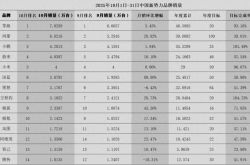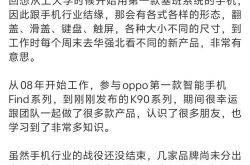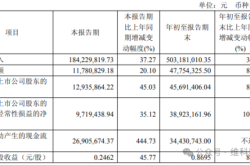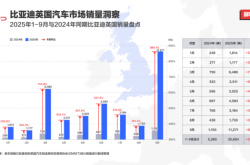TikTok E-commerce: Navigating Ecological Reconstruction and Survival Strategies Post-'Only Refund' Policy Withdrawal
![]() 04/25 2025
04/25 2025
![]() 613
613
Recently, a seismic shift triggered by the modification of the 'only refund' rule has rocked China's e-commerce landscape. Major platforms, including Taobao, JD.com, and TikTok, have collectively revised their after-sales policies, shifting from a three-year-long 'forced only refund' to 'negotiated refund.' This seemingly equitable realignment of consumer and merchant interests, in reality, unmasks the fragile veneer of content e-commerce. As the frenzy of traffic collides with commercial compliance, TikTok e-commerce's GMV mirage is accompanied by a sobering reality: a 17% surge in return rates and a 1.2% unqualified quality inspection rate (according to the State Administration for Market Regulation). This serves as a chilling reminder, dispelling the industry's blind faith in the omnipotence of content.

This policy adjustment is not an isolated incident. In the first quarter of 2024, while TikTok e-commerce's GMV surged by 35% year-on-year, merchant complaints skyrocketed by 42% (data from the China Consumers Association), with 63% of disputes directly attributable to 'goods not matching the description' and malicious returns. On one hand, there's the 'wealth creation myth' of @CrazyXiaoyangge generating RMB 500 million in sales through a single live stream, while on the other, small and medium-sized merchants grapple with a survival crisis, strangled by traffic algorithms due to excessive return rates. TikTok e-commerce's towering wall of daily active users (680 million) is now being pierced by three sharp blades: supply chain vulnerabilities, algorithmic tyranny, and trust crises.
TikTok E-commerce's Triple Moat
TikTok e-commerce has fundamentally altered the traffic dynamics of traditional e-commerce. 2024 data reveals that TikTok boasts over 800 million daily active users, with 43% engaging in e-commerce activities, significantly outpacing industry averages. Its core competencies lie in:
1. Short Video Content's Dimensionality Reduction Attack
Utilizing short videos ranging from 15 seconds to 3 minutes, TikTok transforms product information into an immersive experience. Beauty bloggers showcase lipstick swatches with filters, while home bloggers demonstrate cleaning gadget efficacy in slow motion. This audiovisual narrative edge boosts product conversion rates by 37% compared to traditional images and text. During the 2024 '618' period, a cutting-edge skincare brand drove sales exceeding RMB 20 million through a single short video, while the same product's detail page on Taobao recorded a mere 4.3% conversion rate during the same timeframe.
2. Precision Strike of the Interest Recommendation Engine
TikTok's recommendation algorithm processes 100,000 variables in 0.1 seconds, constructing dynamic interest profiles based on user dwell time, like behavior, and comment keywords. Unlike traditional e-commerce platforms' search logic, TikTok pushes products to potential consumers via the 'Guess You Like' feature. 2024 data shows that 58% of TikTok e-commerce users purchased products they initially had no demand for, compared to 32% on Pinduoduo and 29% on Taobao.
3. Scale Effect of the Live Streaming Economy
As of 2024's end, TikTok had over 3 million monthly active broadcasters, 41% of whom were shopping streamers. Top streamers like @Dongfangzhenxuan achieved single-session GMVs of RMB 230 million, and their knowledge-based shopping model elevated product repurchase rates to 48%, far surpassing the industry average of 23%. This super ecosystem of 'content + transactions' elevated TikTok e-commerce's average order value to RMB 312, a 19% increase from 2023.
Structural Crisis Amidst Prosperity
Despite TikTok e-commerce's 2024 GMV exceeding RMB 4 trillion, a structural crisis is brewing. The State Administration for Market Regulation's data shows its unqualified quality inspection rate rose by 0.3 percentage points to 1.2% compared to 2023. A Consumers Association sample survey revealed that 3 out of every 10 TikTok e-commerce users experienced dissatisfaction, feeling 'passionate about ordering but defeated upon receipt.' As the 'only refund' policy tightens, the platform confronts a harsh reality: the GMV mirage built on traffic is being throttled by a triple noose of inferior supply chains, algorithmic tyranny, and trust deficits.
First, the 'Achilles' Heel' of the Supply Chain
TikTok e-commerce's fatal flaw lies in applying internet thinking to physical business. Third-party logistics still account for up to 85%, and fulfillment costs are 40% higher than JD.com's. Clothing categories' sales rate stands at only 65%, with unsold inventory eroding merchant profits. In 2024, a clothing merchant disclosed that to cater to the algorithm and promote trending items, they adopted a 'small order, quick response' model, resulting in 50% of orders being returned due to size deviations, leading to 'earning revenue but losing capital.'
Second, Ecological Distortion under 'Algorithmic Tyranny'
The platform's traffic allocation mechanism fosters polarization: 0.1% of top accounts monopolize 48% of e-commerce traffic (data from NewRank Research Institute), leaving small and medium-sized merchants trapped in a dilemma—'waiting to die without buying traffic, and dying by buying traffic.' More perilously, algorithmic preferences spawn distorted content. For instance, a food brand attracted attention by showcasing 'cockroaches crawling across the production line,' garnering tens of millions of views but incurring severe regulatory penalties.
Third, the Fragile Foundation of the Trust System
'Goods not matching the description' persists as a nagging issue for TikTok e-commerce. A 2024 Consumers Association sample survey revealed a beauty category return rate as high as 28%, with 63% attributed to severe discrepancies between the actual product and live stream display. Ironically, the platform's AR makeup try-on technology increased lipstick category return rates by 40% due to color differences. When users realize 'perfect products in filters exist only on mobile screens,' the trust edifice of content e-commerce begins to crumble.
Close-quarters Combat with the Big Three
TikTok e-commerce's traffic hegemony may seem unassailable, but upon venturing into traditional e-commerce's heartland, it realizes it's merely a bull in a porcelain shop—seemingly rampaging but actually hindered at every turn. The battle with Taobao, Pinduoduo, and Kuaishou is essentially a clash between 'content bubbles' and 'commercial foundations,' exposing TikTok's weaknesses amidst the giants' encirclement and suppression.

The news that TikTok Mall's DAU surpassed 150 million cannot conceal a harsh truth: its average monthly repurchase rate is only 1.2 times, less than a quarter of Taobao's 4.8 times (iResearch 2024). When consumers need toilet paper, cat food, or laundry detergent, they still turn to Taobao for searches rather than sift through TikTok's vast sea of short videos. TikTok's attempt to forcibly promote the 'return customer plan' with a RMB 5 billion subsidy ended in a 'orders stop when the subsidy stops' dilemma. Worse, Taobao allows merchants to sync TikTok's popular videos to product detail pages. The industry's unspoken rule of 'planting seeds on TikTok and placing orders on Taobao' is draining TikTok's traffic pool.
TikTok's 'RMB 10 billion subsidy' may seem a head-on clash with Pinduoduo, but it exposes fatal flaws in the supply chain. For the same type of tissue paper, Pinduoduo offers free shipping at RMB 9.9 with a profit, while TikTok merchants need to sell it for RMB 12.9. In the price war's final stretch, TikTok loses ignominiously. Ironically, the low-price strategy undermines the platform's ecology. Post-'only refund' rule adjustment, audit efficiency for malicious returns instead increased by 40%, with 'precise risk control + white-label supply chain' turning TikTok's low-price strategy into a self-indulgent spectacle.
In the non-standard products battleground, TikTok's prized algorithm recommendation faltered. Kuaishou's jewelry and jade category GMV exceeded RMB 120 billion in 2024, with a 55% repurchase rate, while TikTok's similar category saw a return rate soar to 38% due to scandals like 'Myanmar jade turning into Henan glass.' The fundamental disparity lies in the fact that the 'human trust' cultivated by the 'Laotie' economy is more potent than algorithm-fed 'interest recommendations.' When users receive goods vastly different from live stream displays, they can only vent frustration using the 'only refund' rule. As Kuaishou fortifies its 'trust consumption' moat, TikTok's 'entertainment-oriented e-commerce' amplifies trust crises.
Ultimate Interrogation of Content E-commerce
TikTok e-commerce's predicament mirrors the internet economy's deep contradictions: traffic can create gods in the short term, but business demands long-term vision. As the excitement threshold of 600 million daily active users is indefinitely raised, and algorithmic recommendations' conclusion leads to disappointment due to goods not matching descriptions, coupled with 'low-price involution' eroding the supply chain's foundation, this content empire must ponder: should it continue indulging in the 'GMV myth,' masking ecological cracks with data bubbles? Or should it take drastic measures to rebuild the value triangle of 'quality-efficiency-experience'? The answer may lie in two choices: leveraging technology to reconstruct trust or cultivating a moat through ecology.
iResearch predicts the live streaming e-commerce market will reach RMB 5.2 trillion in 2025, but if content platforms cannot address the persistent 'selling by acting and fulfilling by luck' issue, they will eventually be ensnared in the cage of false prosperity. As the 'only refund' policy strips away the industry's fig leaf, TikTok e-commerce's real test has only just begun. Users may pay for impulsive actions, but they won't stay for persistent disappointment.








